Disclosure: This article contains affiliate links. We may earn a commission from purchases at no extra cost to you, which helps our travel content.
The first time I visited Hiroshima was with my father when I was sixteen. As we stood before the skeletal dome of the Atomic Bomb building, he quietly said, 'Remember, Diego, history isn't just what happened, but how we choose to remember it.' Twenty-one years later, I've returned to Hiroshima numerous times, each visit peeling back another layer of this resilient city's complex narrative. While the Peace Memorial Park rightfully stands as the city's most significant historical landmark, Hiroshima's story extends far beyond this solemn reminder of nuclear devastation. The city has over 1,400 years of rich history that predates August 6, 1945, and a remarkable renaissance that followed. On my most recent weekend trip this spring, I made it my mission to explore the lesser-known historical sites that reveal Hiroshima's multifaceted identity—places where ancient traditions, samurai legacies, and post-war resilience tell stories that many visitors never hear.
1. Mitaki-dera: The Temple of Three Waterfalls
Tucked away on the wooded slopes of Mount Mitaki lies one of Hiroshima's most atmospheric yet overlooked temples. Mitaki-dera (Three Waterfalls Temple) dates back to 809 CE and offers a spiritual experience far removed from the city center's hustle.
On a misty spring morning, I made the 20-minute journey from Hiroshima Station to Mitaki Station, then hiked the gentle uphill path to the temple entrance. The moment you step through the vermilion gate, the urban world dissolves into a landscape of moss-covered stone lanterns, weathered jizo statues, and the soothing sound of cascading water.
What makes Mitaki-dera particularly significant is its connection to the atomic bombing. The temple houses a small wooden pagoda painted in striking vermilion—Tahoto Pagoda—which was relocated from Wakayama Prefecture as a memorial to atomic bomb victims. Standing before it, surrounded by Japanese maples and the gentle mist from the waterfalls, creates a moment of contemplation that feels distinctly different from the more formal atmosphere of the Peace Park.
The temple complex features three natural waterfalls (hence the name), with stone paths winding between them. The main hall houses a healing Buddha, to which locals have been praying for centuries during times of illness. After the bombing, many survivors came here seeking both physical and spiritual healing.
I spent nearly two hours exploring the temple grounds, photographing the weathered stone monuments with my travel camera. Its small size makes it perfect for documenting historical sites without drawing attention or disturbing the contemplative atmosphere.
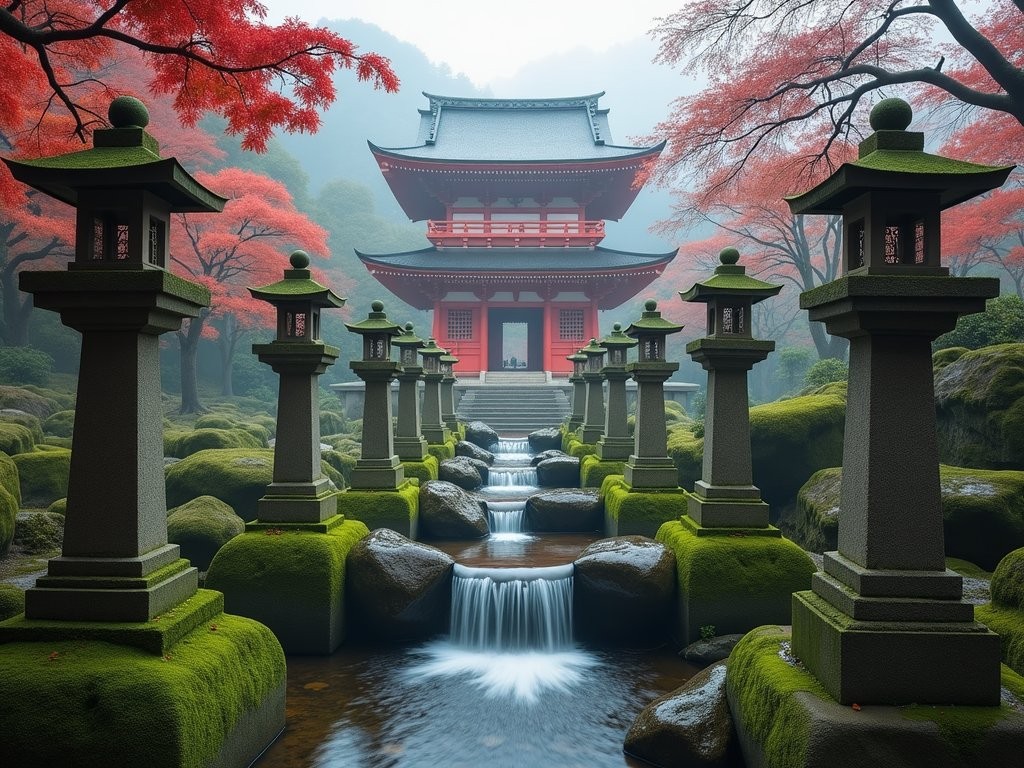
💡 Pro Tips
- Visit early morning (before 9 AM) to have the temple almost entirely to yourself
- Wear comfortable hiking shoes as the paths can be slippery, especially after rain
- Bring a small offering (¥100) for the temple to support its maintenance
2. Fudoin Temple: Surviving the Inferno
Just a 15-minute bus ride from central Hiroshima lies Fudoin Temple, a remarkable survivor of the atomic blast. Built in 1540 during the Muromachi period, this temple stands as one of the few pre-war structures that remained largely intact despite being only 2.5 kilometers from the hypocenter.
Walking through its wooden gate feels like stepping into a time portal—one of the rare places in Hiroshima where you can experience pre-1945 architecture firsthand. The main hall and the two-story gate are designated Important Cultural Properties of Japan, their wooden frames having withstood the force that leveled most of the city.
What struck me most during my visit was the temple's collection of scorched roof tiles, carefully preserved as silent witnesses to the bombing. A monk explained to me that the temple was shielded by the nearby hills, which absorbed much of the blast wave. Still, burn marks are visible on parts of the structure, creating a poignant juxtaposition between preservation and destruction.
The temple's principal deity, Fudo Myoo (the Immovable One), seems particularly appropriate given the building's resilience. This fierce-looking deity is believed to transform anger into salvation—perhaps a fitting metaphor for Hiroshima's own transformation from atomic devastation to a city of peace.
I spent about an hour exploring the temple grounds, taking time to appreciate the detailed woodwork of the main hall and the peaceful inner garden. The fewer tourists here compared to central sites meant I could sit quietly on the wooden veranda, listening to the occasional temple bell and contemplating the structure's remarkable survival.
If you're documenting historical sites like I was, I'd recommend bringing a travel journal to record your observations and impressions. I've found that writing by hand helps me process these powerful historical experiences in a way that digital notes cannot match.
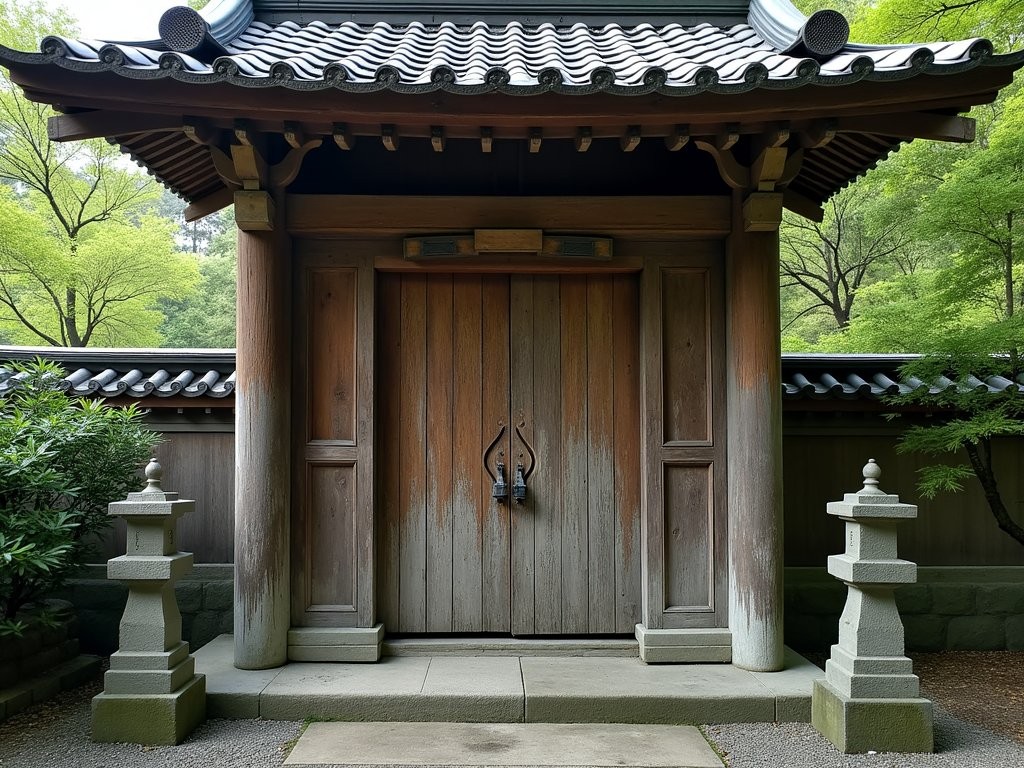
💡 Pro Tips
- Check opening hours before visiting as they can be limited (typically 9 AM-4 PM)
- Take the #6 bus from Hiroshima Station to Fudoin-mae stop
- Look for the burn marks on the wooden gate pillars—subtle but powerful reminders of the temple's survival
3. Hiroshima Castle: The Phoenix Fortress
While not exactly hidden (it's quite visible on the Hiroshima skyline), many visitors overlook Hiroshima Castle in favor of spending more time at the Peace Park. However, this reconstructed 16th-century castle offers a crucial window into the city's pre-war identity and feudal history.
Originally built in 1589 by the powerful daimyo Mōri Terumoto, the castle was completely destroyed in the atomic bombing. What stands today is a faithful reconstruction completed in 1958—a concrete structure with a wooden façade that houses an excellent museum detailing Hiroshima's military and feudal history.
As someone with Japanese heritage, I find myself drawn to these reconstructed historical sites that represent Japan's phoenix-like ability to rebuild. The castle's five stories contain artifacts that survived the bombing, samurai armor, and interactive exhibits that explain the castle's role as the seat of power in the region.
What many visitors miss, however, are the castle grounds themselves. The sprawling 350,400 square meter site includes ruins of the original stone foundations, moats, and several reconstructed guard towers. I spent an early morning walking these grounds, mapping the original layout in my mind and imagining how the castle town once functioned as the beating heart of the region.
The most fascinating aspect for me was learning about the castle's nickname, Rijo (Carp Castle), which later gave the Hiroshima baseball team their name—the Hiroshima Toyo Carp. These cultural connections between feudal history and modern identity highlight how deeply historical consciousness runs in everyday Hiroshima life.
If you're planning to explore multiple historical sites in Hiroshima, consider investing in a good guidebook that provides historical context. While information is available at the sites themselves, having deeper background knowledge significantly enriches the experience.
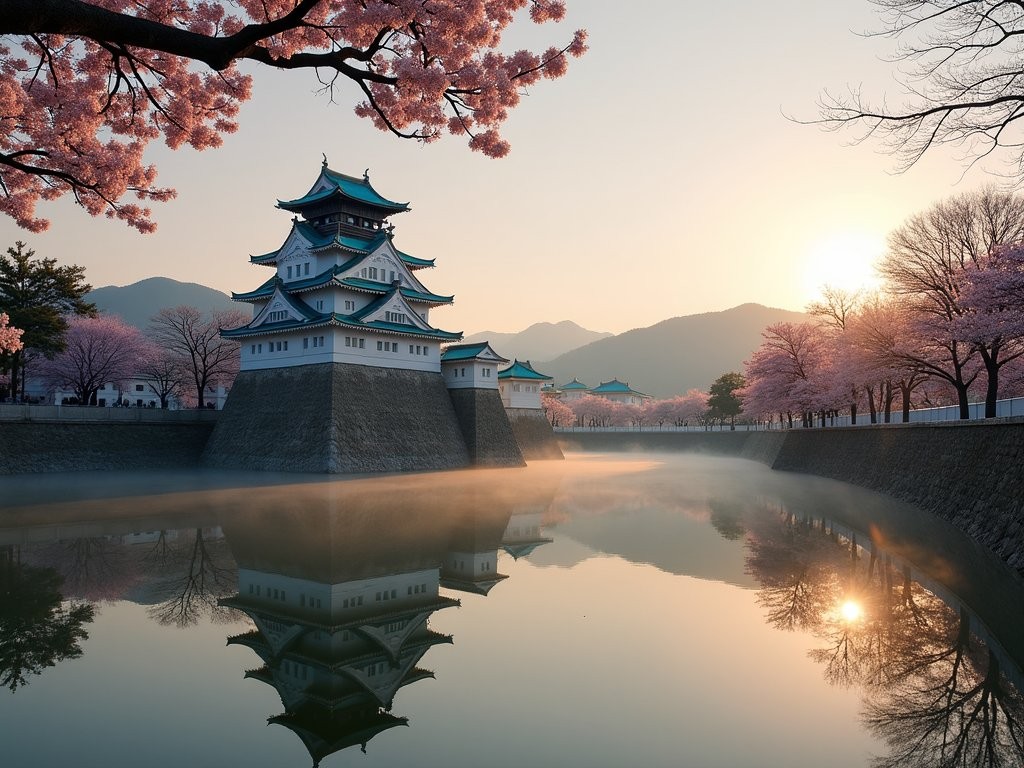
💡 Pro Tips
- Visit early on weekdays to avoid school groups that often tour the castle
- Don't skip the top floor observation deck for panoramic views of modern Hiroshima
- Allow time to explore the outer defensive walls and moat system, where you'll find fewer tourists
4. Hiroshima Prefectural Industrial Promotion Hall Remnants
While the A-Bomb Dome (formerly the Hiroshima Prefectural Industrial Promotion Hall) is the city's most iconic structure, few visitors know that additional remnants of the building lie somewhat hidden from the main memorial.
On my recent visit, I made a point to locate these lesser-known fragments. About 30 meters behind the dome, partially obscured by trees, lie several large concrete segments that were once part of the building's eastern wing. Unlike the dome itself, which is carefully preserved in its immediate post-bomb state, these fragments have been left to weather naturally, with plants growing around and sometimes through them.
These overlooked remnants offer a different perspective on the bombing's aftermath. While the dome itself has become an international symbol, these scattered concrete pieces feel more intimate and less curated. Sitting quietly beside them early one morning, I watched as locals jogged past, some pausing briefly in acknowledgment, others continuing their daily routines—a living demonstration of how Hiroshima has integrated its traumatic past into everyday life.
What makes these fragments particularly significant is that they're gradually deteriorating with time and weather, unlike the carefully preserved dome. They represent the natural process of decay that would have claimed all evidence of the bombing had conservation efforts not been implemented.
During my visit, I recorded my observations and reflections using my portable recorder, which I've found invaluable for capturing my thoughts and ambient sounds at historical sites. The audio diary I created captures both my observations and the subtle sounds of the Motoyasu River flowing nearby—creating a multisensory memory that photographs alone cannot provide.
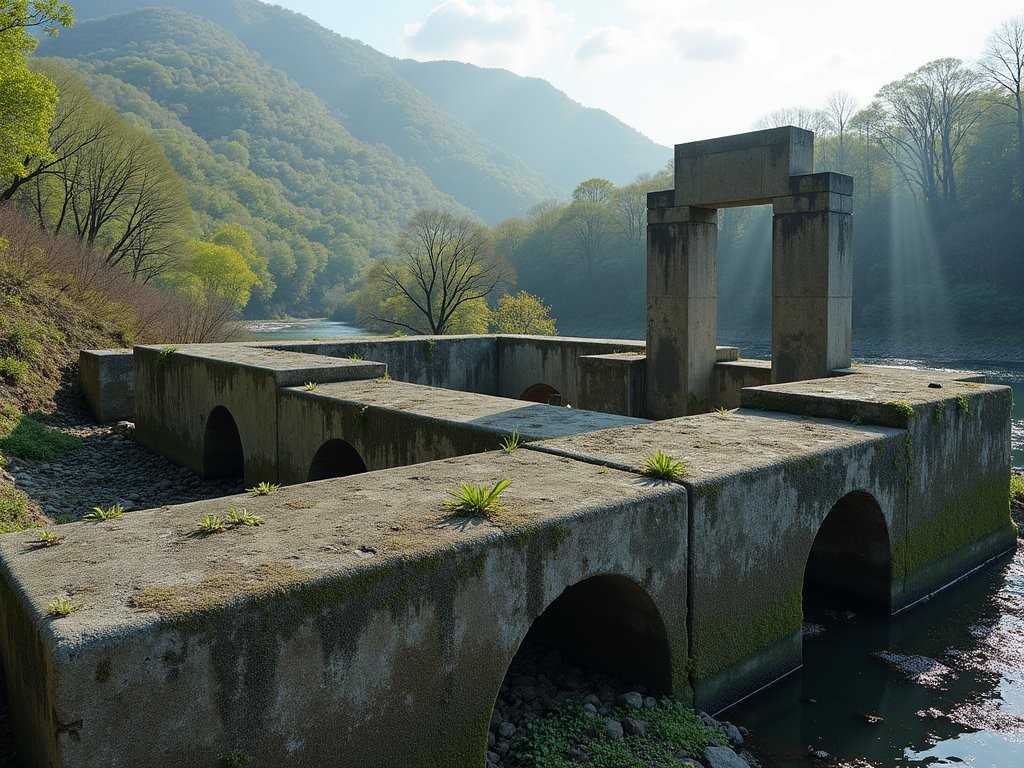
💡 Pro Tips
- Visit early morning or evening when the main A-Bomb Dome area is less crowded
- Look for the path that leads behind the dome toward the river to find these fragments
- Bring binoculars to observe architectural details of both the dome and fragments without crossing barriers
5. Hiroshima Andersen: A Literary Phoenix
One of my most unexpected discoveries in Hiroshima was learning about a bakery with profound historical significance. Hiroshima Andersen, located in the Hatchobori shopping district, isn't just any bakery—it was the first business to rebuild and reopen in the devastated downtown area after the atomic bombing.
Founded by Shunji Murai in 1946, less than a year after the bombing, the bakery was named after Hans Christian Andersen, symbolizing hope and the power of storytelling in dark times. Murai chose to sell bread—still somewhat unfamiliar in the Japanese diet of that era—as a symbol of Western reconstruction aid and a new beginning for the city.
Today, the original bakery has evolved into a local chain, but the main store in Hatchobori maintains its historical significance with a small exhibition area that includes photographs of the devastated city and the original bakery's humble beginnings. The current building features a distinctive fairy-tale façade with motifs from Andersen's stories, standing as a whimsical contrast to the somber history it represents.
During my visit, I spoke with an elderly staff member whose parents had been among the bakery's first customers. She explained that in those desperate post-war days, the aroma of fresh bread wafting through the destroyed city became a powerful symbol of renewal—a sensory reminder that life would continue.
I spent about an hour at the bakery, sampling their signature curry bread and Danish pastries while examining the historical photographs. What struck me most was how this seemingly ordinary business embodies Hiroshima's pragmatic approach to remembrance: honoring the past while actively building a future.
The experience reminded me why I always pack a pocket translator when exploring historical sites in Japan. The device allowed me to translate the Japanese-only historical captions beneath the photographs, revealing details about the bakery's founding that I would have otherwise missed.
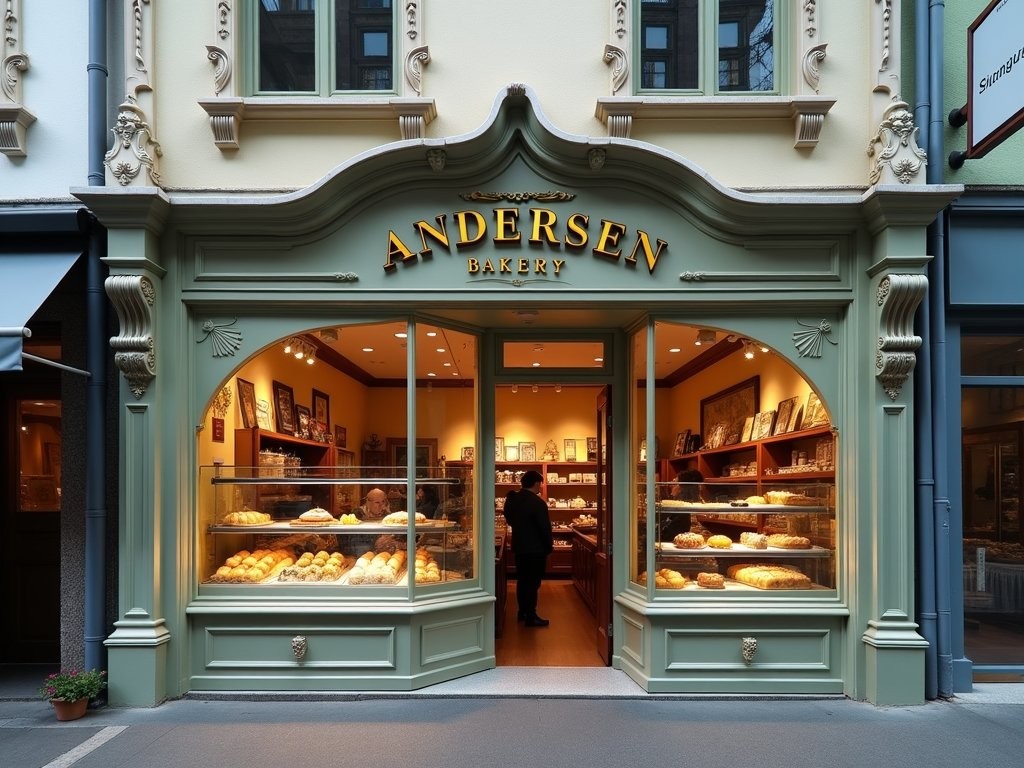
💡 Pro Tips
- Visit around 10 AM when fresh bread comes out of the oven and the bakery is less crowded
- Ask the staff about the historical photos—some older employees have family connections to the original bakery
- Try the curry bread, a recipe that dates back to the bakery's early post-war days
6. Rai Sanyo Shiseki Museum: The Forgotten Intellectual
In a quiet residential area about 20 minutes by bus from central Hiroshima stands a traditional Japanese house that few foreign visitors ever see. This is the former residence of Rai Sanyo (1780-1832), one of Japan's most influential historians and scholars of the late Edo period.
Rai's magnum opus, "Nihon Gaishi" (Unofficial History of Japan), helped shape the intellectual foundation for Japan's modernization by critiquing the shogunate system and advocating for imperial restoration. His writings influenced many of the samurai who would later lead the Meiji Restoration, fundamentally transforming Japan from feudal isolation to modern nation-state.
The modest house where he spent his final years has been preserved as the Rai Sanyo Shiseki Museum. What makes this site particularly remarkable is that it survived the atomic bombing despite being only 1.5 kilometers from the hypocenter. The traditional wooden structure was protected by a small hill, leaving it as one of the few authentic Edo-period buildings remaining in Hiroshima.
During my visit, I was the only visitor—a stark contrast to the crowded Peace Park. The caretaker, an elderly man with encyclopedic knowledge of Rai's work, seemed genuinely pleased to share the site's history with a foreign visitor. He showed me Rai's study, where the scholar wrote while overlooking a meticulously maintained Japanese garden that remains largely unchanged since the Edo period.
The museum contains Rai's original manuscripts, writing implements, and personal effects. What fascinated me most was seeing his handwritten notes in the margins of Chinese classics—evidence of the cross-cultural intellectual exchange that characterized Japanese scholarship of that era. As someone with multicultural heritage myself, I appreciate these historical reminders that Japanese intellectual tradition has always been engaged in dialogue with other cultures, despite periods of isolation.
The garden deserves special mention—designed according to traditional principles, it's meant to be viewed from the house's tatami rooms, creating living landscape paintings that change with the seasons. In spring, the weeping cherry tree creates a focal point that perfectly frames the garden's central pond.
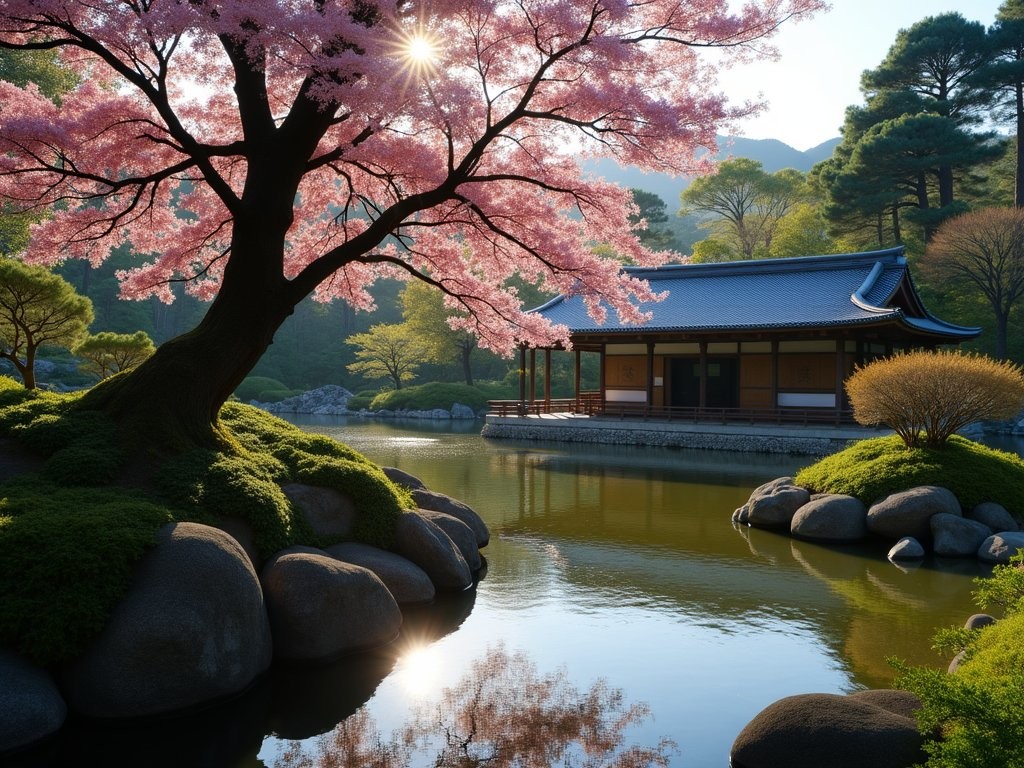
💡 Pro Tips
- Call ahead to confirm opening hours as they can be irregular
- Take bus #6 from Hiroshima Station to Kokuzenji-mae stop
- Remove shoes before entering the house and bring socks if you're uncomfortable going barefoot on tatami
7. Atomic Bomb Memorial Mound: The Forgotten Victims
Perhaps the most solemn site on this list lies within the Peace Memorial Park itself, yet is frequently overlooked by visitors focused on the more prominent cenotaph and museum. The Atomic Bomb Memorial Mound (Atomic Bomb Victims Memorial Mound) is a simple, grass-covered mound that contains the ashes of approximately 70,000 unidentified victims of the bombing.
What makes this site particularly significant is that it continues to serve an active funerary function. When construction projects in Hiroshima uncover previously undiscovered remains of bombing victims—something that still happens occasionally—those remains are cremated and interred here. The most recent addition was in 2019, when remains found during a building renovation were added to the mound.
The site features a small, white cubical memorial structure with a simple inscription that reads "Rest in Peace" in Japanese. Inside this structure is a registry of all known names of those whose ashes are interred in the mound. What struck me during my visit was the fresh flowers and incense—evidence that for many Hiroshima families, this remains an active site of mourning and remembrance, not merely a historical monument.
I visited early one morning and found an elderly woman carefully arranging flowers at the site. Through limited conversation, I learned she comes weekly to honor family members whose remains were never individually identified. Her continued devotion, more than 75 years after the bombing, offered a powerful reminder that for many in Hiroshima, the atomic bombing isn't distant history but lived family experience.
The Memorial Mound sits in a quieter section of the Peace Park, surrounded by carefully tended pine trees that provide a sense of respectful seclusion. The atmosphere here differs markedly from the more educational and demonstrative main areas of the Peace Park—this is a place primarily for reflection and remembrance.
Visiting historical sites with such emotional weight requires proper preparation. I always carry a water bottle during these explorations, as the emotional impact of such places can be physically draining, particularly in Hiroshima's humid spring weather.
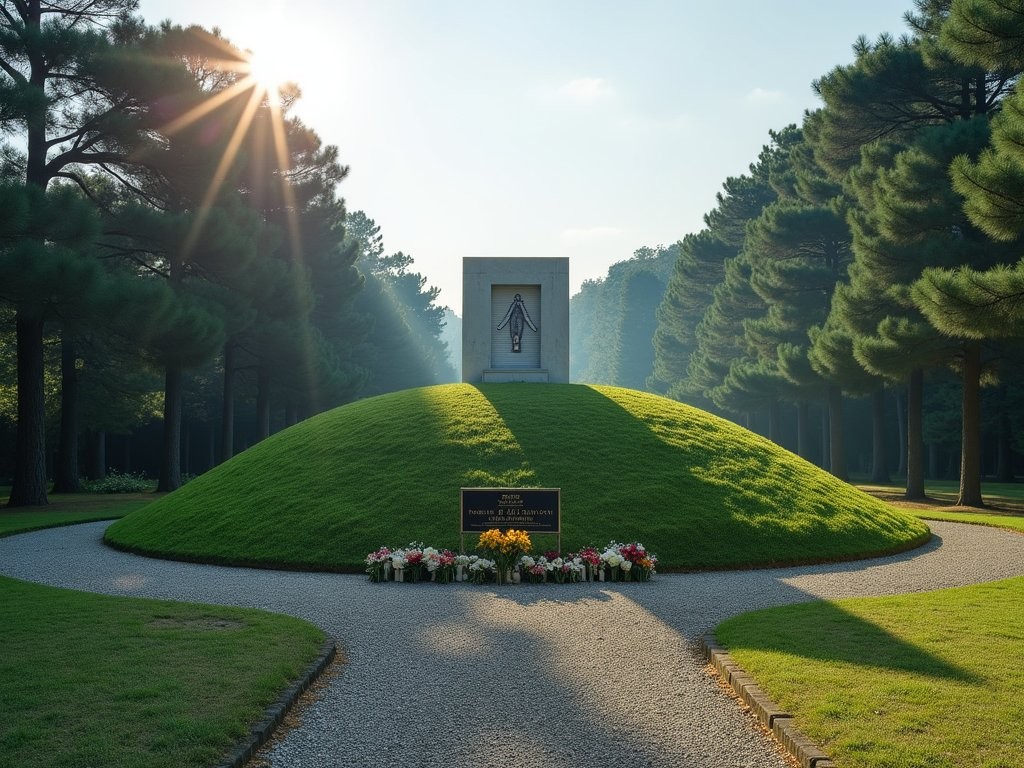
💡 Pro Tips
- Visit early morning or evening when the Peace Park is less crowded for a more contemplative experience
- Observe proper etiquette by maintaining silence and not photographing mourners who may be visiting
- Consider bringing a small flower offering as a sign of respect
Final Thoughts
As I stood at the Atomic Bomb Memorial Mound on my final morning in Hiroshima, watching the early light filter through the pine trees, I reflected on how these lesser-known sites had transformed my understanding of the city. Hiroshima isn't merely a symbol of atomic devastation or a one-dimensional peace memorial—it's a complex tapestry of resilience, cultural preservation, and thoughtful remembrance. From the hidden concrete fragments behind the A-Bomb Dome to the surviving temple structures and the humble bakery that signaled rebirth, these sites tell a more nuanced story than the standard tourist narrative. They remind us that Hiroshima's history extends both long before and far beyond August 6, 1945. As travelers seeking deeper connections to the places we visit, we owe it to ourselves—and to the communities that welcome us—to look beyond the obvious landmarks and discover these quieter keepers of memory. Next time you visit Hiroshima, I hope you'll seek out these seven sites and perhaps discover your own hidden historical gems in this remarkable city.
✨ Key Takeaways
- Hiroshima's historical identity extends far beyond the atomic bombing, with sites dating back to the 8th century
- Several pre-war structures survived the bombing and offer authentic glimpses into pre-1945 Hiroshima
- Many significant historical sites are within easy reach of downtown but receive fraction of the visitors
- Early morning visits provide the most contemplative experience at these historical sites
- Local businesses like Hiroshima Andersen bakery played crucial roles in the city's post-war recovery
📋 Practical Information
Best Time to Visit
March-May (spring) or October-November (autumn)
Budget Estimate
¥10,000-15,000 for a weekend (excluding accommodation)
Recommended Duration
1-2 full days beyond the main Peace Park visit
Difficulty Level
Easy - All Sites Accessible By Public Transportation
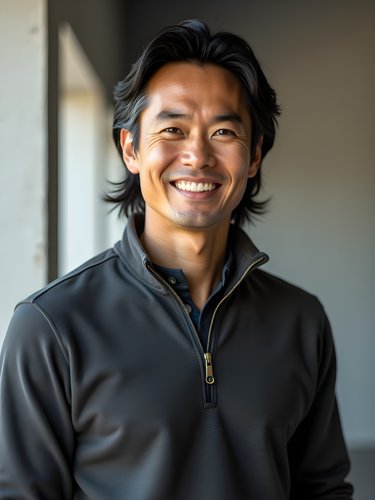
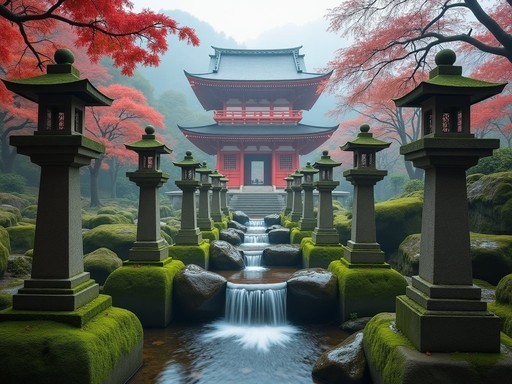

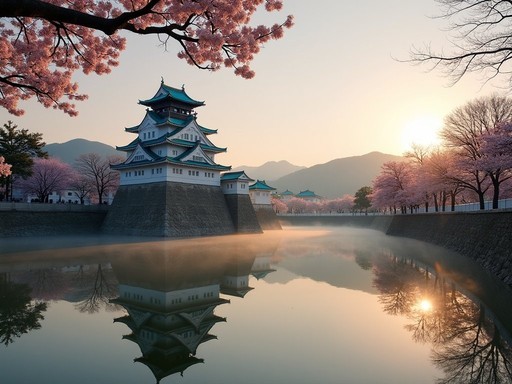
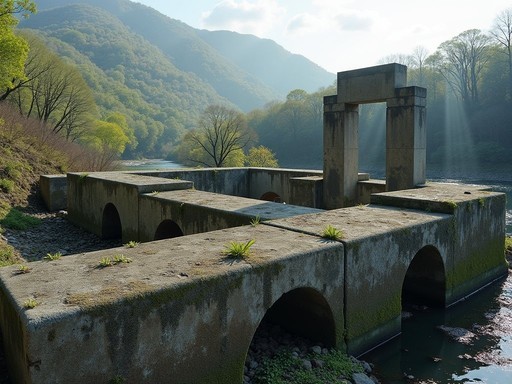
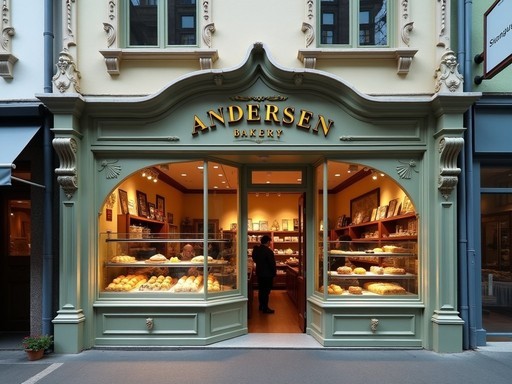
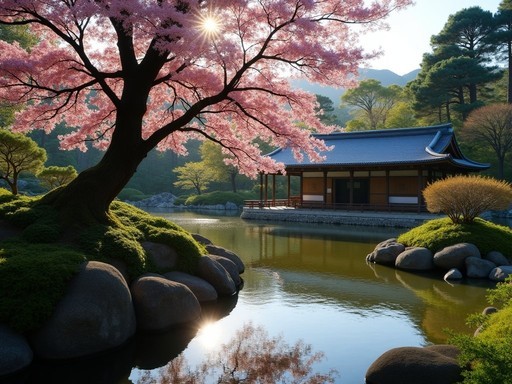


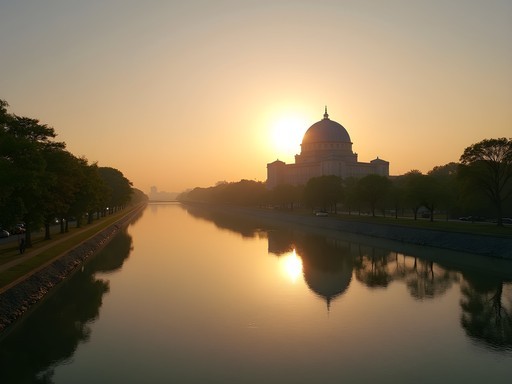







Comments
Sophia Gomez
Diego, thank you for highlighting these overlooked gems. I was in Hiroshima last year for a business conference and only had one free day. On your recommendation from an earlier post, I visited Mitaki-dera and it was the perfect contemplative space I needed after intense meetings. The walk up through the cemetery with all those stone lanterns was hauntingly beautiful. I wish I'd seen this full list before my trip! One thing I'd add for business travelers with limited time: these sites are much less crowded on weekdays, and Hiroshima Castle is beautifully lit at night if you can only squeeze in an evening visit.
Diego Tanaka
So glad you got to experience Mitaki-dera, Sophia! You're absolutely right about the weekday visits - and that nighttime tip about the castle is gold. I'll have to try that next time I'm there.
redqueen
Those photos of Mitaki-dera are stunning! The red pagoda against all that green 😍
journeylover
Just got back from Hiroshima last month and visited most of these sites! The Hiroshima Prefectural Industrial Promotion Hall remnants were incredibly moving - much less crowded than the main dome area. And Mitaki-dera was absolutely magical in the rain. One tip I'd add: if you're there during summer like I was, go to these lesser-known sites early morning. I had Fudoin Temple almost completely to myself at 9am while tourist buses were already packing the Peace Park. Also, don't miss the okonomiyaki in Hiroshima - completely different style than Osaka's!
moonwalker1191
Great post! How accessible is public transportation to these lesser-known sites? Especially Mitaki-dera?
journeylover
Not OP but I was there in April. Mitaki-dera is just a short train ride from Hiroshima Station (like 10 mins) and then about a 15-minute walk. Super easy with Google Maps!
moonwalker1191
Thanks! That's perfect. Was worried it would be hard to reach without a car.
Riley Griffin
Diego, this post brought back so many memories. I took my kids to Hiroshima last year, and while the Peace Memorial was powerful, Fudoin Temple was where my 12-year-old daughter really connected with the history. Something about those 800-year-old buildings surviving the blast really put things in perspective for her. We also spent an afternoon at Hiroshima Castle which the kids loved - the samurai armor displays were a big hit! If anyone's planning a family trip, I'd suggest picking up this guidebook which had some great tips for explaining the heavier historical aspects to younger travelers.
Diego Tanaka
Thanks Riley! So glad to hear your daughter connected with Fudoin. It's amazing how certain places speak differently to different people. The resilience symbolized there is something special.
redqueen
Riley, how old were your kids when you took them? Wondering if my 9-year-old is ready for Hiroshima.
Riley Griffin
Mine were 12 and 14, but I think a mature 9-year-old could handle it with proper preparation. The castle and Mitaki-dera are good places to start before tackling the heavier sites.
freeking
Wow, never knew about Mitaki-dera! Adding it to my list for next month's trip.
Jean Wells
Diego, thank you for highlighting these overlooked treasures. As someone who's lived in Japan for 15 years, I appreciate how you've captured the nuanced history of Hiroshima beyond the atomic bombing narrative. Fudoin Temple is particularly significant as one of the few structures that survived both the bombing and centuries of warfare. I'd add Shukkeien Garden to your list - it was devastated in 1945 but meticulously restored, and now serves as another symbol of resilience. I always recommend visitors bring a good guidebook with historical context - I use this one which provides excellent background on these lesser-known sites. Your father's words about history were profoundly true.
Diego Tanaka
Thank you for the thoughtful comment, Jean! You're absolutely right about Shukkeien Garden - it's a beautiful example of restoration and resilience. I'll have to include it if I do a follow-up piece. Really appreciate your insights after 15 years in Japan!
wavemate
Jean - is Shukkeien Garden accessible for someone with mobility issues? My mom uses a cane and I'm planning our trip.
Jean Wells
Wavemate - Shukkeien has some accessible paths, but certain areas have steps and narrow bridges. The main entrance area and central pond are fairly accessible. I'd suggest visiting in the morning when it's less crowded. The staff are very helpful if you need assistance!
wavemate
Great post! How did you get around to all these places? Is public transport reliable or should I rent a car when visiting?
Diego Tanaka
Hiroshima has excellent public transportation! The tram system hits most major spots, and buses reach the rest. I used a 1-day pass for 700 yen. No need for a car unless you're heading to rural areas outside the city.
coollife
We did the public transportation too and it was great! Super easy to navigate even with minimal Japanese.
coollife
This post really hit me in the feels. I visited Hiroshima last year and only saw the Peace Memorial, had no idea about these other sites. Mitaki-dera looks incredible with those waterfalls! Wish I'd known about it. Definitely bookmarking this for my next trip to Japan. The way you described your father's words about history really resonated with me.
Diego Tanaka
Thanks so much, coollife! Mitaki-dera is truly special, especially during autumn when the maple trees turn. Hope you get to experience it next time!
springguy
Beautiful post. Is autumn a good time to visit these sites? Thinking about going in November.
Diego Tanaka
November is perfect! Mitaki-dera is famous for autumn colors - the red pagoda against the fall foliage is stunning. The weather is usually mild and clear too. Just bring layers as mornings can be chilly.
Venture X
Premium card with 2X miles, $300 travel credit, Priority Pass